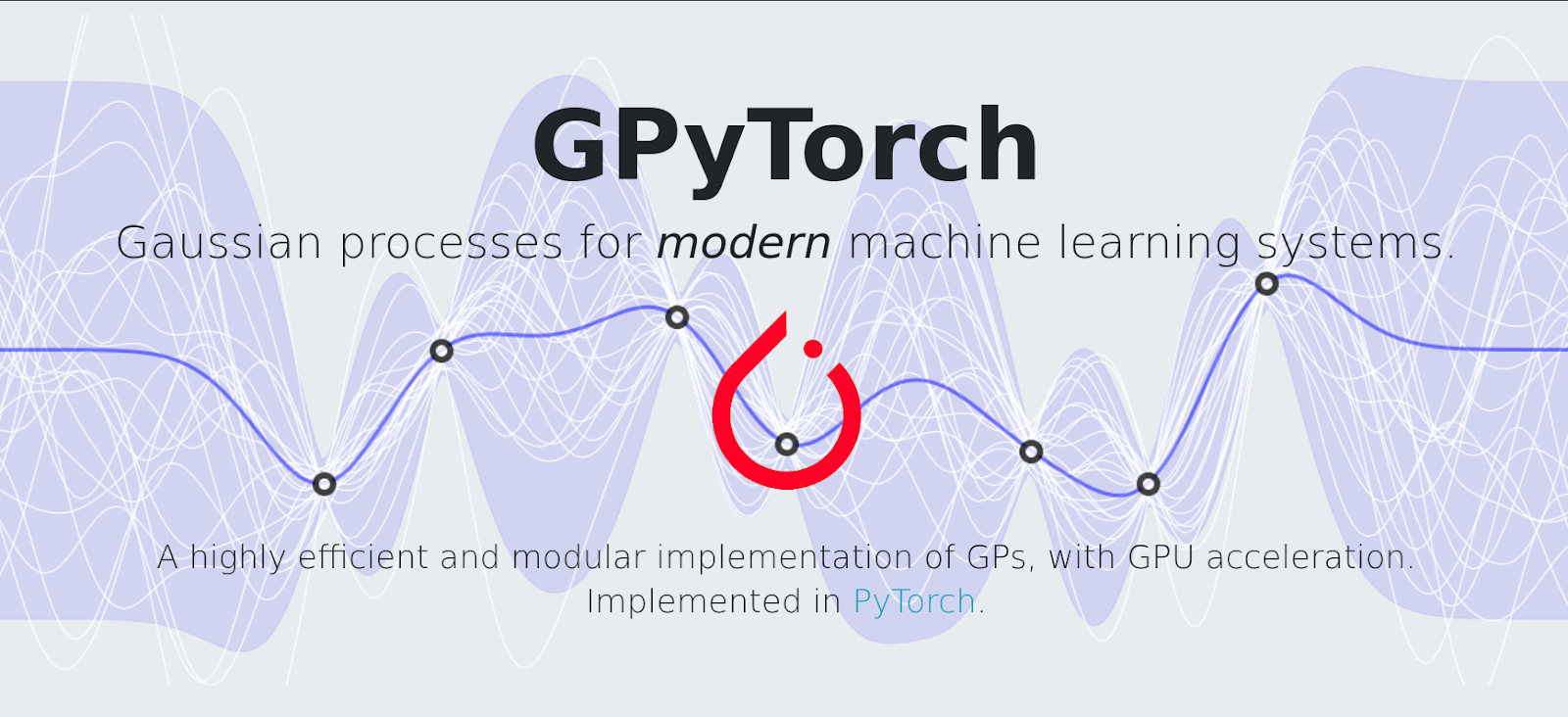GPyTorch is a PyTorch-based library designed for implementing Gaussian processes. It was introduced by Jacob R. Gardner, Geoff Pleiss, David Bindel, Kilian Q. Weinberger and Andrew Gordon Wilson – researchers at Cornel University (research paper).
Before going into the details of GPyTorch, let us first understand what a Gaussian process means, in short.
Gaussian Process
In probability theory and statistics, the Gaussian process refers to a stochastic process i.e. a collection of random variables indexed by time or space in such a way that each finite collection of the random variables has a multivariate normal distribution (every finite linear combination of the variables is normally distributed).
You might have heard about statistical inference techniques such as Bayesian inference using which one can represent uncertainty over numeric values like the outcome of a dice roll or the height of a person. Gaussian process instead is a probability distribution over possible functions. Find a detailed description of the Gaussian process here.
Overview of GPyTorch
GPyTorch enables easy creation of flexible, scalable and modular Gaussian process models. It is implemented using PyTorch. It performs GP inference via Blackbox Matrix-Matrix multiplication (BBMM).
Pros of GPyTorch
- Scalability: It enables training of GPs with millions of data points
- Modular design: It has the capability of easily integrating GPs with deep neural networks
- Speed: It can utilize state-of-the-art inference algorithms (such as SKI/KISS-GP, stochastic Lanczos expansions, LOVE, SKIP, stochastic variational deep kernel learning) and hardware acceleration using GPUs
Practical implementation
Here’s a demonstration of training an RBF kernel Gaussian process on the following function:
y = sin(2x) + E …(i)
E ~ (0, 0.04)
(where 0 is mean of the normal distribution and 0.04 is the variance)
The code has been implemented in Google colab with Python 3.7.10 and GPyTorch 1.4.0 versions. Step-wise explanation of the code is as follows:
- Install the GPyTorch library
!pip install gpytorch
- Import required libraries
import math import torch import gpytorch from matplotlib import pyplot as plt %matplotlib inline #for visualization plots to appear at the frontend
- Prepare training data
# Choose regularly spaced 100 points from the interval [0,1] x_train = torch.linspace(0, 1, 100) # Compute label as sin(2*pi*x) with Gaussian noise as described by eq.(i) above y_train = torch.sin(x_train * (2 * math.pi)) + torch.randn(x_train.size()) * math.sqrt(0.04)
- Define the GP model
We have used exact inference – the simplest form of GP model
class ExactGPModel(gpytorch.models.ExactGP): def __init__(self, x_train, y_train, likelihood): super(ExactGPModel, self).__init__(x_train, y_train, likelihood) self.mean_module = gpytorch.means.ConstantMean() #prior mean #covariance self.covar_module = gpytorch.kernels.ScaleKernel (gpytorch.kernels.RBFKernel()) def forward(self, x): mean_x = self.mean_module(x) covar_x = self.covar_module(x) return gpytorch.distributions.MultivariateNormal(mean_x, covar_x)
For most of the GP regression models, following objects should be constructed:
- A ‘GP Model’ which handles most of the inference
- A ‘Likelihood’
- A ‘Mean’ defining prior mean of GP
- A ‘Kernel’ defining covariance of GP
- A Multivariate Normal Distribution
The two methods defined above are components of the Exact (non-variational) GP model.
The _init_ method takes a likelihood and the training data. It then constructs objects like mean module and kernel module required for the ‘forward’ method of the model. The ‘forward’ method takes in some data x. It returns a multivariate normal distribution with prior mean and covariance computed at x.
- Initialize likelihood
lkh = gpytorch.likelihoods.GaussianLikelihood()
Initialize the GP model
model = ExactGPModel(x_train, y_train, lkh)
- Find optimal hyperparameters of the model
model.train() lkh.train()
Output:
GaussianLikelihood( (noise_covar): HomoskedasticNoise( (raw_noise_constraint): GreaterThan(1.000E-04) ) )
- Use Adam optimization algorithm
opt = torch.optim.Adam(model.parameters(), lr=0.1)
- Define loss for GP
l = gpytorch.mlls.ExactMarginalLogLikelihood(lkh, model)
- Compute loss, length scale (i.e. length of twists and turns in the function) and noise for each iteration of the GP
for i in range(20): # Zero gradients from previous iteration opt.zero_grad() # Store output from the model op = model(x_train) # Compute loss and backprop gradients loss = -l(op, y_train) loss.backward() #back propagation #torch.autograd.backward() calculates sum of gradients of given tensors #Print the loss, length scale and noise for 20 iterations print('Iter %d/%d - Loss: %.3f lengthscale: %.3f noise: %.3f' % ( i + 1, 20, loss.item(), #iteration number model.covar_module.base_kernel.lengthscale.item(), #length scale model.likelihood.noise.item() #noise ))
- Make prediction with the model
#Evaluation (predictive posterior) mode model.eval() lkh.eval()
- Make predictions by feeding model through likelihood
with torch.no_grad(), gpytorch.settings.fast_pred_var(): x_test = torch.linspace(0, 1, 51) #equally spaced 51 test points in [0,1] observed_pred = likelihood(model(x_test))
- Plot the fitted model
with torch.no_grad(): #disable gradient computation # Initialize plot fig, axis = plt.subplots(1, 1, figsize=(4, 3)) # Upper and lower confidence bounds lower, upper = observed_pred.confidence_region() # Plot training data as black stars axis.plot(x_train.numpy(), y_train.numpy(), 'k*') # Plot predictive means as blue line axis.plot(x_test.numpy(), observed_pred.mean.numpy(), 'b') # Shade between the lower and upper confidence bounds #fill the area showing confidence axis.fill_between(x_test.numpy(), lower.numpy(), upper.numpy(), alpha=0.5) axis.set_ylim([-3, 3]) #Y-direction limits axis.legend(['Observed Data', 'Mean', 'Confidence'])
Output plot:
- Code source
- Google colab notebook of the above implementation
References
To get a detailed understanding of the GPyTorch library, refer to the following web links:



















































































